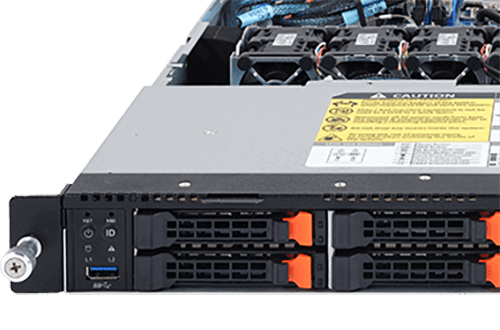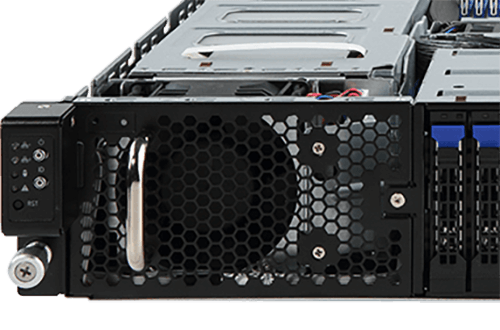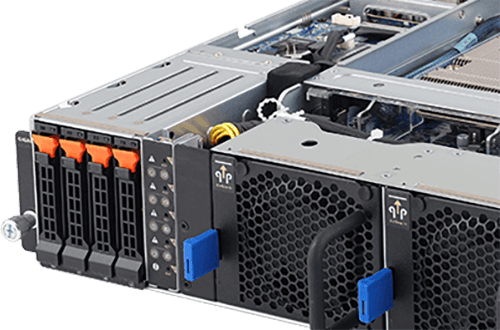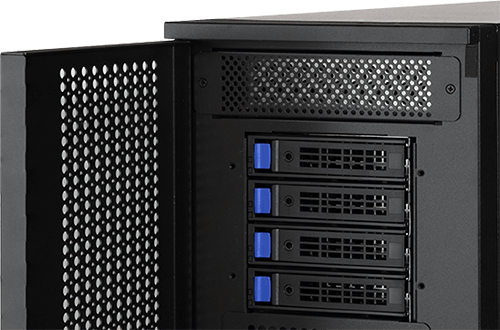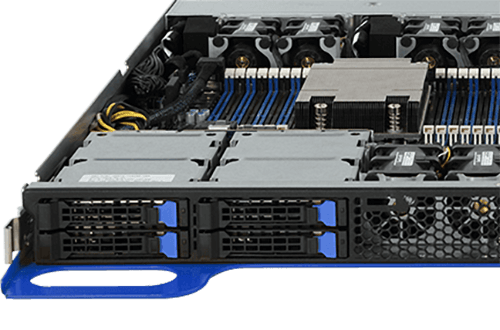Immersion Cooling
What is it?
Immersion cooling is a type of liquid cooling method where the servers are directly immersed inside a bath of non-conductive, dielectric liquid. Heat given off by the servers' components is transferred to the surrounding liquid. Because of the temperature gradient in the liquid, the heated liquid that is less dense rises to the top. As this occurs, the liquid is removed from the top of the tank and replaced with cooler liquid from the bottom. This heat transfer process is called natural convection. Therefore, the immersion cooling system does not require additional active cooling components, such as fans, and so it can go a long way toward improving your data center's energy efficiency.
There are two types of immersion cooling, which work in slightly different ways.
●Single-Phase Immersion Cooling
In this process, the coolant will not change its state by evaporating, it always remains a liquid. The warm coolant in the tank is pumped out by the coolant distribution unit (CDU) and the heat is transferred to a heat exchanger, which is a secondary cooling circuit that transfers the heat to facility water or outside air.
●Two-Phase Immersion Cooling
The cooling method in two-phase is similar to single-phase in that the coolant absorbs the heat from the servers or IT components; however, in two-phase immersion cooling, the liquid changes state. As the coolant reaches its ultra-low boiling point, the vapor bubbles rise to the top and enter a gaseous state. After evaporating, the vapor comes in contact with a condenser that returns it back to its liquid state. The fluids flow back into the bath to renew the cycle.
There are two types of immersion cooling, which work in slightly different ways.
●Single-Phase Immersion Cooling
In this process, the coolant will not change its state by evaporating, it always remains a liquid. The warm coolant in the tank is pumped out by the coolant distribution unit (CDU) and the heat is transferred to a heat exchanger, which is a secondary cooling circuit that transfers the heat to facility water or outside air.
●Two-Phase Immersion Cooling
The cooling method in two-phase is similar to single-phase in that the coolant absorbs the heat from the servers or IT components; however, in two-phase immersion cooling, the liquid changes state. As the coolant reaches its ultra-low boiling point, the vapor bubbles rise to the top and enter a gaseous state. After evaporating, the vapor comes in contact with a condenser that returns it back to its liquid state. The fluids flow back into the bath to renew the cycle.
Why do you need it?
Since routing and space for airflow found in traditional air-cooling systems do not need to be considered, servers that are ready for immersion cooling are easily modified; this allows for optimal hardware density. Cooling fans are also no longer needed, greatly reducing noise and power consumption within the data center, which in turn improves efficiency, as reflected in the power usage effectiveness (PUE) ratio. In addition, the removal of mechanical parts, such as cooling fans, means that less maintenance will be needed.
How is GIGABYTE helpful?
For single-phase immersion cooling, GIGABYTE Technology provides a complete line of solutions, including GIGABYTE's own immersion tanks for EIA or OCP-standard servers, and peripherals like lifts, dry racks, and coolants. GIGABYTE's immersion-cooled servers are also compatible with solutions from leading providers such as Asperitas, GRC, and Submer. Success cases include Japan's leading telecom provider KDDI, which used single-phase immersion cooling with GIGABYTE servers to create innovative "container-type immersion cooling small data centers" for green computing on the edge.
GIGABYTE also offers two-phase immersion cooling solutions that enable customers to significantly reduce data center energy consumption, improve PUE, and reduce operating costs and environmental impact. Success cases include the world's foremost semiconductor giant, which selected GIGABYTE’s two-phase immersion cooling solution to build "green HPC data centers" capable of pushing PUE below 1.08 and reducing the data center’s total power consumption by up to 30%.
The field of HPC, in which GIGABYTE has extensive experience, is most suitable to adopt immersion cooling due to high temperatures generated by the server components as well as high maintenance costs. GIGABYTE makes it easy to modify standard server products to be fully compatible with an immersion cooling system. The servers used in these solutions are installed with brackets to support vertical installation and removal for easy management. GIGABYTE's immersion tanks are self-contained and equipped with sensors to maintain ideal operating temperature, as well as a redundant CDU to provide greater operation stability.
Learn more:
《Advanced Cooling Solutions》
《Immersion cooling has become the top choice for ESG-centric industry forerunner》
GIGABYTE also offers two-phase immersion cooling solutions that enable customers to significantly reduce data center energy consumption, improve PUE, and reduce operating costs and environmental impact. Success cases include the world's foremost semiconductor giant, which selected GIGABYTE’s two-phase immersion cooling solution to build "green HPC data centers" capable of pushing PUE below 1.08 and reducing the data center’s total power consumption by up to 30%.
The field of HPC, in which GIGABYTE has extensive experience, is most suitable to adopt immersion cooling due to high temperatures generated by the server components as well as high maintenance costs. GIGABYTE makes it easy to modify standard server products to be fully compatible with an immersion cooling system. The servers used in these solutions are installed with brackets to support vertical installation and removal for easy management. GIGABYTE's immersion tanks are self-contained and equipped with sensors to maintain ideal operating temperature, as well as a redundant CDU to provide greater operation stability.
Learn more:
《Advanced Cooling Solutions》
《Immersion cooling has become the top choice for ESG-centric industry forerunner》







